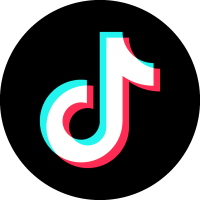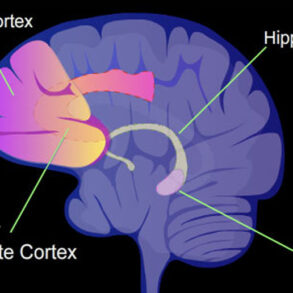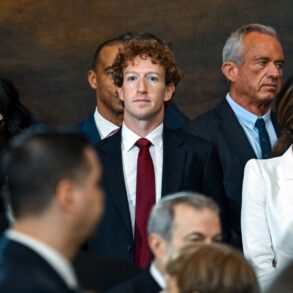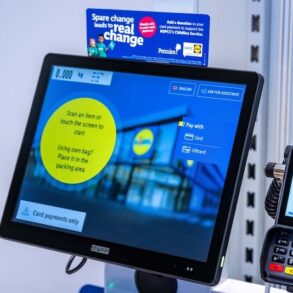 Okay, nobody really thought TikTok was going to go away. Not 18 months ago, when I suggested that broadcasters start pondering life without it. Not last weekend, when I asked Facebook friends what radio should do if it actually happened. The responses were mostly “do nothing” and “keep being the best radio station you can be.”
Okay, nobody really thought TikTok was going to go away. Not 18 months ago, when I suggested that broadcasters start pondering life without it. Not last weekend, when I asked Facebook friends what radio should do if it actually happened. The responses were mostly “do nothing” and “keep being the best radio station you can be.”
“Actually play real music,” suggested radio engineer Mike Erickson.
“Ignore it, because everything’s already voice-tracked for Monday,” said veteran PD Steve Weed.
Matt Bailey of Graphs About Songs knew what I was getting at. His response: “Treat it like a cultural event: Create a contest based on it. Have a promotional stunt based on it. Highlight songs TikTok made hits. Use it to create great radio. For God’s sake, don’t try to launch a replacement. Radio still struggles with making decent websites.”
By Monday, it was an even more hypothetical question. WFLY Albany, N.Y., which started with a “Farewell to TikTok” weekend, pivoted to “Welcome Back TikTok.” The music industry was not without its chosen vehicle for breaking music. Seventeen-year-olds were not without the medium that held sway over them in the same way that radio did for us.
“Radio still struggles with making decent websites” is very true. You can also add “or delivering a decent streaming experience.” I’ve already suggested that those are reasons for radio not to push too hard into, say, AI jocks.
Playing the hits and being the best of what radio can be is never wrong. But to some extent, it was clear even 18 months ago that part of the reason why radio could no longer afford to be its best self was from being so thoroughly upstaged in the digital world in a way that impacted the main product. Radio would benefit from being able to create the next irresistible thing, or at the very least, partner with it.
Broadcasters have reminded us for the last 15 years that radio is the original social network. However you might feel about that claim, radio was certainly a community. In the early years of the new rock revolution, Alternative CIMX (89X) Detroit listeners would mention it in their personal ads. For a few years, radio actually was in the dating-service business.
We’ve seen with sad regularity how some stations become the gathering place now mostly in times of crisis. At other times, the original social network seems not just reluctant to be a social network now but seems oddly anti-social: almost no listeners on-air, canned-sounding breaks, local geography mentioned mostly in sweepers, websites with no management names — just generic contact forms or info e-mails.
The anonymity extends to the websites themselves, especially if you encounter them during hours when the DJ is listed as “continuous Mix music.” Radioinsight publisher (and station website builder) Lance Venta says that even the threat of a TikTok ban is “why stations and talent should have their own web platforms they properly maintain and update in some form to ensure their audience knows where to find them. And what a majority of the radio groups are doing isn’t it.”
For a moment, it looked like the excitement generated by Canada’s “join the conversation” format would help increase listener interactivity in North America, to the point where consultant Alan Burns titled his U.S. version Social Radio. In Canada, three of the five stations doing the format are now gone. In America, it was never able to find an outlet.
As an industry, we have come to publicly recognize the importance of personality and companionship over the last few years, something perhaps reinforced by the “loneliness epidemic” discussions of recent weeks. Yet, it isn’t something we’re fiscally able or wiling to deliver. And while the AI personality discussion has died down lately, whatever isolation listeners feel isn’t going to be addressed that way any more than a chatbot substitutes for human contact.
For many broadcasters, even the use of existing social networks has become fraught. Radio was already pondering X vs. Threads and BlueSky. Now even Facebook and Instagram aren’t mutually agreeable gathering places for everybody. One of the things radio has to offer at this moment, were it somehow to delve back into the social world, is that music radio remains common ground in a way that few other places are now. That impacts both what we do on the air and whether we should make loftier plans involving social.
(YouTube has not experienced the same polarization. One of the things I’ve felt radio should do, with or without TikTok, is to encourage its YT channels as a place for listener videos. I’ve also felt that radio could support the music it chooses to break — on those occasions when it still chooses to break music — by advocating for music not just on the air but on social media, particularly YouTube.)
All the time, I find myself again wanting radio to flex and realizing how big an ask that is at the moment. Whether it’s here or not, I want radio to assert itself against TikTok again, in part because I regard TikTok as a mediocre music curator and letting it be the world’s music director as a terrible strategy. Lola Young’s “Messy” is the first exciting record of 2025, but it’s been hiding in plain sight since May, and the industry needed it months ago. Then again, radio didn’t find it sooner either.
It’s interesting to again be pondering this in a week that veteran broadcaster Cousin Bruce Morrow has taken his Saturday night WABC New York show national. WABC in its Top 40 heyday was perhaps American radio’s ultimate shared experience, and Morrow was at its epicenter. Regardless of whether TikTok is allowed to exist, radio is no longer fighting for its place under the listener’s pillow that we occupied in that era.







